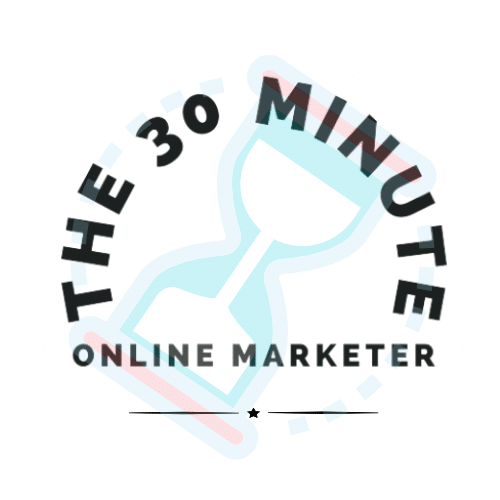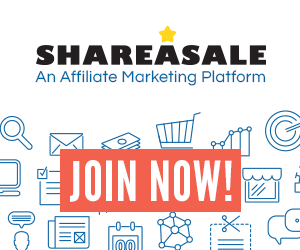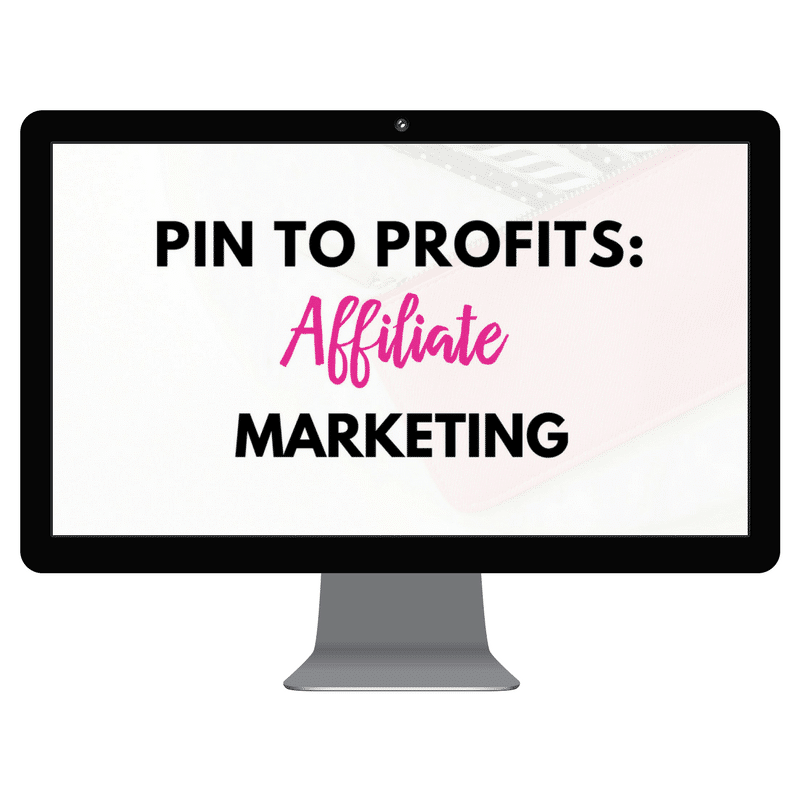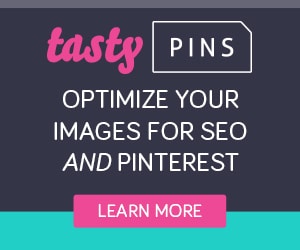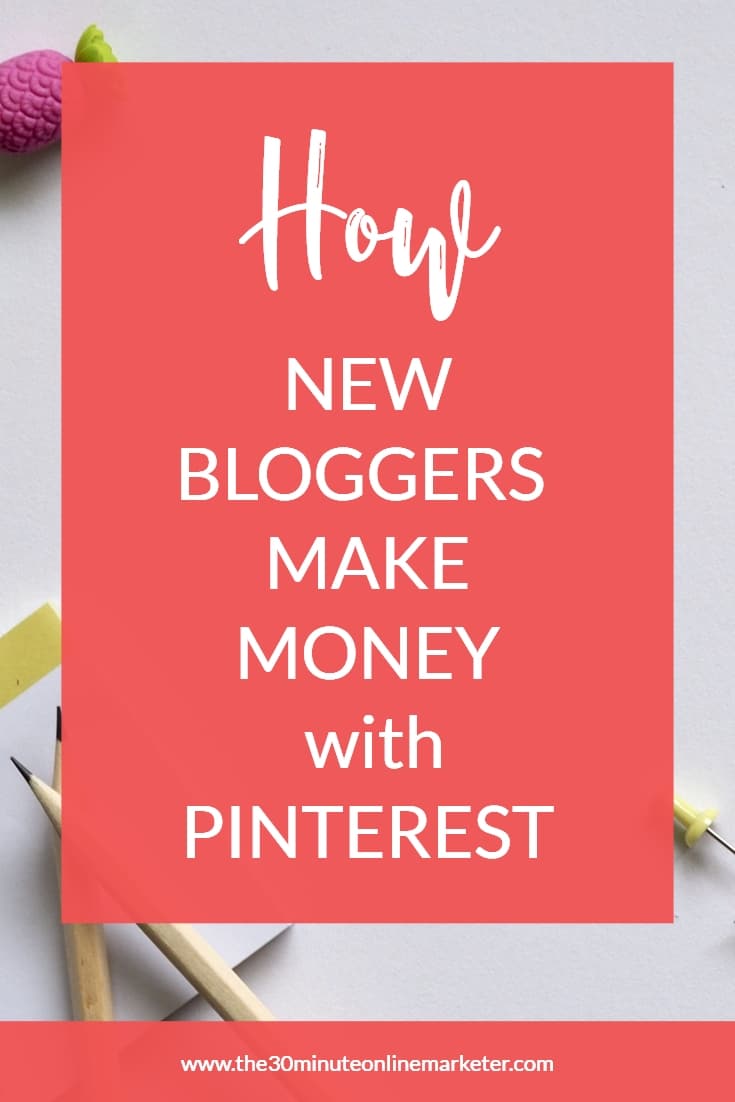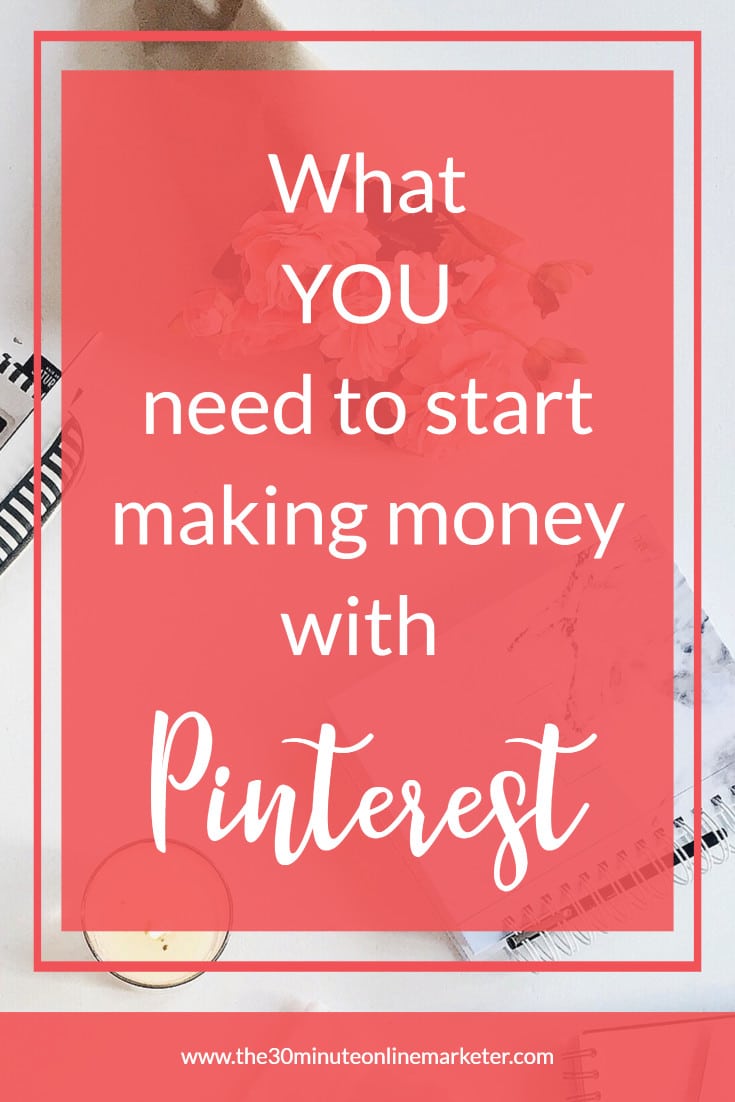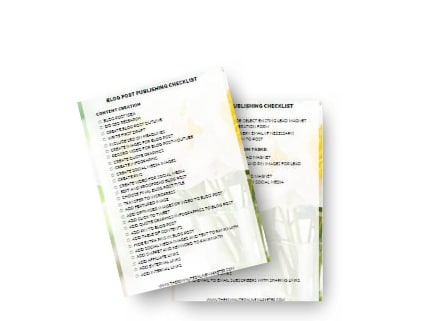Getting enough traffic to your blog to start making a regular income selling your own products or services can take a while.
That’s why using Pinterest as a source of income is a great idea if you are a beginner blogger. And the best thing is that it doesn’t take a lot of extra work to set things up.
So what do you need to make money with Pinterest?
More...
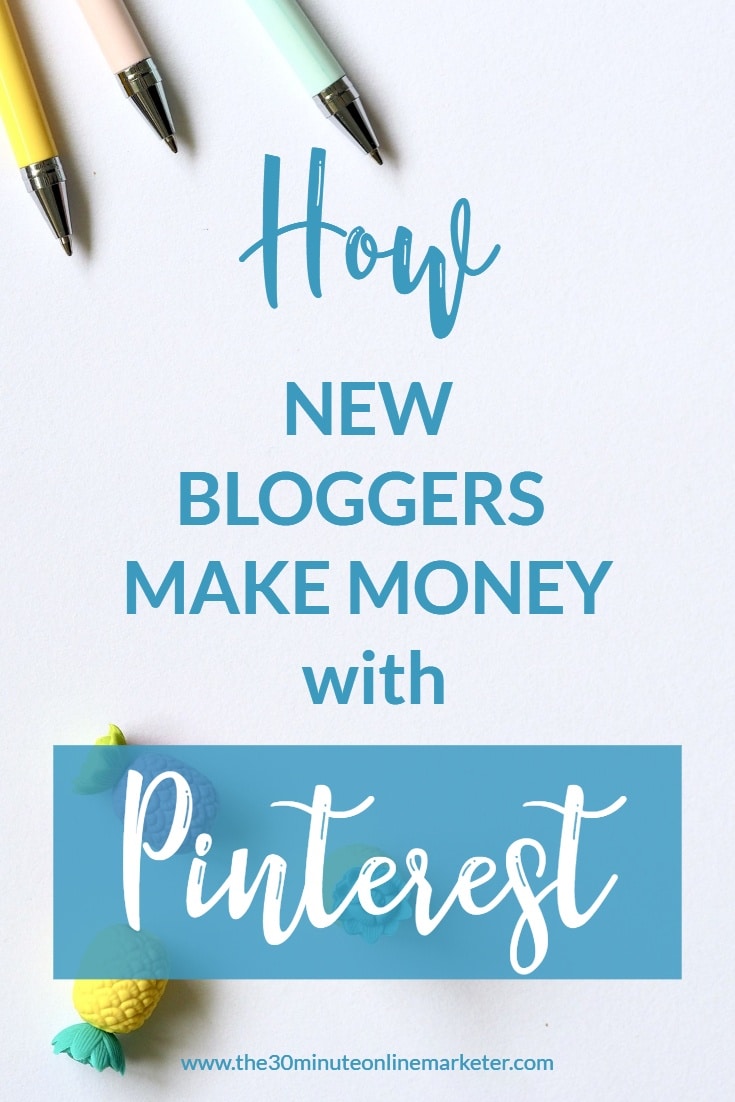
[Disclaimer: Some links in this post contain affiliate links. This means I get a commission if you purchase the product through my link at no extra cost to you. As an Amazon Affiliate I earn from qualifying purchases.]
do lots of Followers help you make money with pinterest?
The good thing about Pinterest is that you don’t need a lot of followers, but obviously you still need to have some.
I started making money with Pinterest with under 200 followers for some of my profiles. And I followed the steps explained by McKinzie Bean from Momsmakecents in her course Pin to Profits: Affiliate Marketing course.
I chose her course cos I didn’t have a clue about what to do, needed something that would start giving me results and wasn’t too time-consuming or expensive to do.
It started quite slowly, to be honest. You need people to see your pins for this to work, so the more followers you have the better. But that’s where Group Boards helped me.
TIP: To get more #Pinterestfollowers when you start you can use promo treads in Facebook Groups. #Pinterestmarketing
Group Boards
This is where new bloggers can find big audiences. Even if you have a small number of followers, by posting to group boards your pin can reach thousands of people.
Even though Pinterest may now give more importance in the feed to your own boards, you will need them until you have enough followers of your own.
Apply to as many as you can at first, until you know which boards are good for you.
Affiliate Programs
If you don’t have your own products to sell yet, and most beginner bloggers don’t, you need to join some affiliate networks and programs so you can make money by sharing the affiliate links on Pinterest.
Affiliate Networks
For beginner bloggers, I’d recommend joining an affiliate network.
One of these networks will give you access to products and merchants in many different niches, so you can always find something to use but payments and all the admin are done through the network. It keeps things simple. Shareasale and AWIN are two of the best for beginners, in my opinion.
Amazon Affiliates
Amazon Affiliates is also easy to get into but it usually takes a little while to build up the money before you get paid (also if you use One Link to monetise traffic from other countries, cos the money is kept separate for each country).
The earlier you join Amazon Affiliates the better. Don’t’ expect to get $100s every month from Amazon, though!TIP: Amazon affiliates is good for craft tutorials, mommy blogs, beauty blogs or when a merchant doesn’t have their own affiliate program but they sell through Amazon.
Individual products and tools
Some of the best affiliate programs for bloggers are the ones for tools you use.
They are usually quite generous, offer recurring payments, if appropriate, and have longish cookies. So your readers don’t have to buy now, they can buy something in 10 days or 30 days and you still get your commission!
For instance, I use Drip for my email marketing, Sitegroundfor my web hosting, Tailwind, BoardBooster and Smarterqueue for my scheduling, and I love them, so I am happy to recommend them.
It’s also easy for me to write blog posts and emails about them because I know how everything works.
You can do this even if you don’t blog about marketing or blogging, by the way. You can have a resources page or a small section of your blog that talks about blogging for people in your niche.
Lots of blog posts
Basically, the more blog posts you have, the more money you can potentially make with Pinterest and your blog.
You should include affiliate links (the special link each affiliate has for each product) in ALL your blog posts from the start.
You can add links to text, to your images, or add some banners and even videos to your blog posts and when somebody clicks on them and they buy, you get your commission.
I know, I know. unless you’re a very prolific writer, you’re not going to have a lot of content at the beginning. But it’s important that you start putting things in place so when you start getting more traffic you can make the most of it.
Don’t despair if you don’t have a lot of content yet, here’s where Pinterest really helps:
Pins with affiliate links
The good thing about using Pinterest for affiliate marketing is that you don’t even need to have a blog post for each product.
You can now use pins to link directly to the product you are recommending.
You don’t even need a blog, as McKinzie’s course shows you.
#TIP: ALWAYS check that you can use #affiliatelinks directly in social media posts.
Why use pins with affiliate links?
Affiliate marketing is a numbers game.
You’ll get a percentage of people that click on your pin.
Out of these people, a percentage of people that read the post will click on an affiliate link. Then, out of these people, a small number will actually buy the product.
So out of 1000 of people that read your blog post, you could get 5 or 10 actually buying it, depending on your conversion rate.
Click here for an invite to my Share Your Mom Blog Tribe.
But if you are using pins to link directly to the products, you’re making this path much shorter. When your followers (or anybody that finds your pin on Pinterest) click on your pin, they go straight to the landing page.
Another reason is that it takes a while to create all the blog content you need, doesn’t it? But it can take you 10-15 minutes to have 2 or 3 new pins for one of the products. And another 5 minutes to schedule them in Tailwind and you’re done!
Pinnable Images
You need to have a variety of pinnable images for your blog posts and the products you recommend.
One thing I learnt from McKinzie is that it’s not just about using the right colours or the right fonts or the right design, it is about getting your followers to click on your pin. Once they’ve clicked on it, they can read all the info and decide if it’s for them.
Having several images also means that you’re not repeating the same pins all the time in group boards.
And you learn which pins get you more click throughs and more sales, so your pin design becomes more effective.In her course, McKinzie goes over pin design principles and shows you how she uses Canva to create her pins.
I prefer Stencil, though, because it’s much faster to use and there are lots of images and icons that look great in social media images. True, it doesn’t have as many templates as Canva. But keeping things simple can also save you a lot of time.
Great pin descriptions will help you ear more
It can take a little care and attention to get pin descriptions right so you get more conversions.
You want to get as many people as you can clicking through.
So your pin descriptions should include keywords that people are going to be looking for as well as hashtags.
But when it comes to the text you are trying to convince people to click and buy so you can use calls to action, a description of what the product is, what you think about it…
My tip here would be to use the same image and try different pin descriptions to see which one works best and schedule them so they are not together on your boards.
McKinzie goes into a lot more detail in Pinterest to Profits than I do in this blog post but using her explanations has helped me come up with some templates that I can use again and again to create different pin descriptions. I keep my templates in a spreadsheet. It’s also easier for me to tweak them and customise them for each different product.
Schedulers
Your Pinterest traffic will grow if you are consistent with your pinning. That's why you have to do it regularly and you must follow a system. Otherwise, you won’t know what you’ve been pinning and you might be wasting your time.
So, although I try to do a bit of manual pinning every day, in my opinion, you should use a scheduler like Tailwind as well, cos it gives you the flexibility you need to pin as many pins and as often as you want and you can use Tailwind Tribes too.
Summing up
Making money with affiliate marketing is a numbers game. But a beginner blogger can start to make money with Pinterest with a relatively small number of followers, not a lot of blog posts, and a small number of products to recommend if she uses pins with affiliate links and uses Tailwind and to pin to group boards and Tribes.
Best of all, once your pins become popular, they can take a life of their own and they continue being pinned without you having to do anything.
Recommended Resources:
Pinterest to Profits Course by McKinzie Bean
The She Approach to Making Pinterest Possible by Ana Savuica. >>>GET A $5 DISCOUNT WHEN YOU USE CODE TSA5OFF<<<
